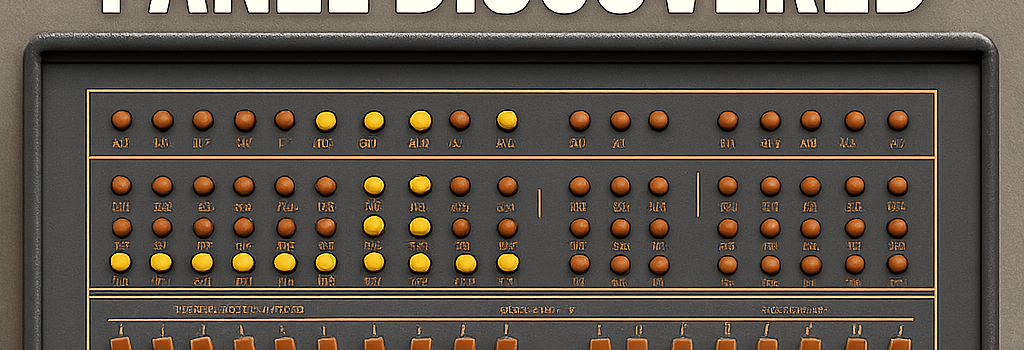Rare RCA Spectra Mainframe Control Panel Discovered

Discovery and Initial Restoration
In an unexpected twist of retrocomputing fate, Reddit user SonOfADeadMeme recently posted images of a 1966-era RCA Spectra 70/35 computer control panel salvaged from a collapsed family garage. The find was shared on the retrobattlestations subreddit, which celebrates vintage hardware from the golden age of mainframes. After carefully cleaning grime from the aluminum faceplate and refurbishing key switches, the enthusiast confirmed that firing up the panel alone would require upwards of 1,500 lbs of missing Spectra 70 mainframe hardware.
“I first stumbled on it four years ago but didn’t realize its rarity until I started deep research. No other photos of a 70/35 panel exist online—only 70/45s and 70/55s,” said SonOfADeadMeme.
Historical Context: RCA’s Spectra 70 vs. IBM System/360
Introduced in 1965 and shipped in 1966, the RCA Spectra 70 series was RCA’s direct challenge to IBM’s dominant System/360 architecture. The Spectra line offered:
- Software compatibility with IBM System/360 binaries
- Monolithic integrated circuits for reduced power consumption
- Configurable core memory from 4K up to 32K bytes
- A range of models: 70/15, 70/25, 70/35, 70/45, 70/55
Though RCA discontinued the line in 1971 and sold its division to Univac, Spectra systems briefly remained in service before being phased out, making surviving hardware increasingly scarce.
Technical Deep Dive: Wiring, Logic and Components
The retrieved control panel is the maintenance console module that mounted to the main CPU cabinet. Its rear wiring harness reveals decades-old wiring techniques, including:
- Discrete NPN/PNP transistors and resistor–capacitor networks for LED driving and key debounce
- Mil-spec wire looms with color-coded 22 AWG conductors for Power Good and Bus Enable signals
- TTL-compatible indicator lamps (Q0–Q13 buses) monitored via Schottky transistor interfaces
- A heavy-duty connector block for 5 VDC, ±12 VDC and unregulated 24 VDC rails supplied by the mainframe’s switch-mode power supplies
According to vinyl labels on the backplane, the panel’s logic circuits ran at 2 MHz, matching the core memory cycle time of the 70/35. RCA’s service manuals specified front-panel diagnostics for memory address verification and program step execution, enabling onsite technicians to single-step code and inspect registers.
Preservation, Restoration, and Display Considerations
Given the absence of the rest of the 70/35 hardware, the owner plans a non-intrusive restoration by fitting addressable LEDs behind each status lamp. Restoration expert Dr. Elaine Roberts of the Computer History Conservation Society recommends:
- Using deionized water and mild surfactant to remove decades of grease without harming silk-screened legends.
- Replacing brittle insulation on original wiring with modern PVC-lined alternatives while preserving original terminations.
- Documenting each circuit path in a digital schematic for future researchers.
“Maintaining authenticity is key—anything irreversible should be avoided,” says Dr. Roberts, who has overseen the restoration of multiple 1960s control consoles.
Community Impact and Future Prospects
The emergence of this panel has sparked fresh excitement among vintage hardware collectors and museum curators. A recent thread on classiccmp.org speculates that it could be the world’s only surviving 70/35 console. Plans are underway to exhibit it at the Vintage Computer Festival in Mountain View this fall.
While 1,500 lbs of matching Spectra 70 components remain elusive, enthusiasts are exploring alternative drives:
- 3D-printed mockups of core memory modules
- FPGA-based emulators replicating the Spectra 70 instruction set
- Interactive LED arrays synchronized to period-accurate boot sequences
Expert Opinion: The Legacy of RCA’s Spectra Architecture
“RCA’s decision to implement monolithic ICs in a large system was groundbreaking. It signaled the transition from vacuum tubes to solid-state logic in enterprise computing,” explains Dr. Victor Hayes, author of Solid-State Revolution: The Rise of Integrated Mainframes.
Conclusion: A Window into Computing’s Pioneering Era
The accidental recovery of the RCA Spectra 70/35 maintenance panel offers a rare tangible link to mid-1960s mainframe engineering. Its pending restoration and public display promise to educate new generations about the technical innovations and industrial craftsmanship that laid the groundwork for today’s data centers.